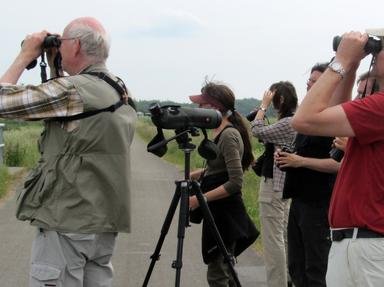Quiz Answer Key and Fun Facts
1. The non-flying group of birds known as ratites include the ostrich, the emu, the kiwi, the cassowary, the rhea, the (extinct) moa, and the (extinct) elephant bird. Which island was the only known habitat of the elephant bird?
2. It is generally accepted that as many as four species of elephant birds may have existed on the island with the largest, the great elephant bird, being the last one to become extinct. What is the great elephant bird's official name?
3. Currently the largest bird in the world, the ostrich can weigh up to 300 lbs. and reach a height of 6 feet. Which bird is considered to be the heaviest ever on record?
4. A very rare elephant bird egg was acquired by explorer Luis Marden in 1967. Where is this elephant bird egg kept?
5. What is suspected to have contributed to the extinction of the great elephant bird?
6. The elephant bird was first seen by either Indonesian, African, or Arab explorers who visited the island between 100-500 A.D.. Who were the first Europeans to settle on the island and possibly see the elephant bird?
7. One of the first Europeans to describe the great elephant bird was Etienne de Flacourt (1607-1660), the first French Governor of the island. In 1658, he briefly wrote "...a large bird which haunts the Ampatres and lays eggs like the ostriches; so that the people of these places may not take it, it seeks the most lonely places". Why did de Flacourt not later elaborate on the existence of the elephant bird?
8. The elephant bird is thought to have evolved on its sole island habitat instead of originating from another continent. Yet, curiously, there were reports of "aepyornithid" (elephant bird-like) eggs found on a group of islands off the northwest coast of mainland Africa. On which island group were eggs similar to those of the elephant bird found?
9. From 1500 till the mid-1800's, Europeans were still skeptical of the possibility of "giant birds laying giant eggs". In 1851, confirmation of the elephant bird's existence came courtesy of a certain (French) Captain Abadie. What evidence proving the elephant bird's existence did he acquire?
10. The sheer size of the great elephant bird may have given rise to a mythological bird of prey. Which bird?
Source: Author
benniebenbenny
This quiz was reviewed by FunTrivia editor
crisw before going online.
Any errors found in FunTrivia content are routinely corrected through our feedback system.

